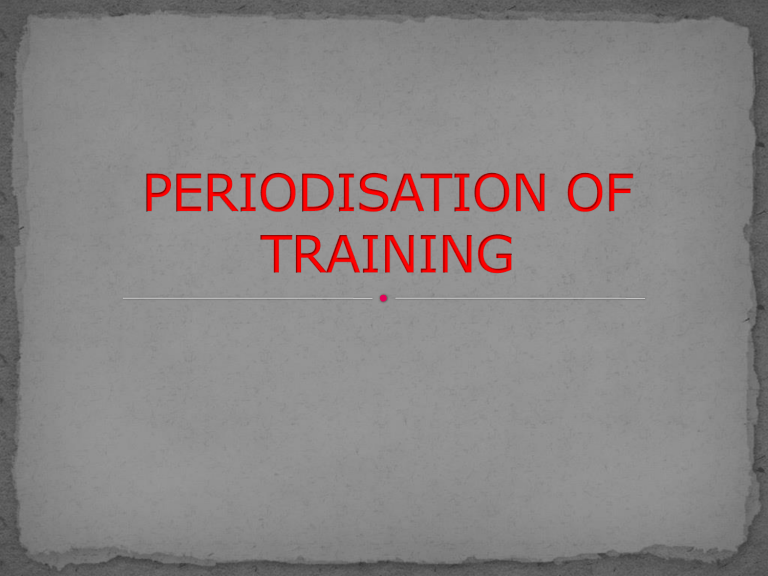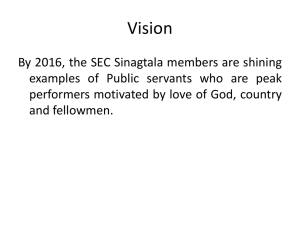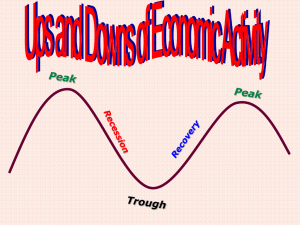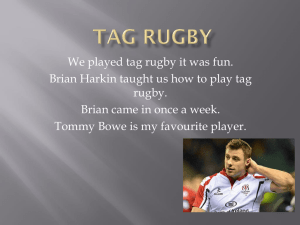PERIODISATION OF TRAINING

Breaking the training programme into periods of time that will help the athlete reach their peak performance at a certain time
ATHLETICS
GOLF
SWIMMING
CYCLING
TENNIS
What makes these sports easier to peak for than, football or rugby?
Some sports have obvious times when you want to peak such as a World Cup, Olympics
World Championships or Commonwealth
Games.
Other sports have long seasons where peaking is less obvious as these sports are based on league tables such as football and rugby.
Saying that both rugby codes have play offs so peaking at the end of the season is more important but you must have qualified
When you know what or when you want to peak you can start to develop a training programme for instance:
:they’ve been thinking about this since Beijing 2008
Chris Hoy – Cycling
Christine Ohorogu – Running
Rebecca Adlignton – Swimming
Macro-cycle 1 YEAR
4-6 WEEKS Meso-cycle
Micro-cycle
UNIT 1 DAY
1 WEEK
The length of each cycle will depend on their aims.
Macro-cycle
A yearly programme with the aim of peaking for a specific event. Ex. 1 year
Meso-cycle
– a phase (4 – 6 week blocks)
Micro-cycle
•
A training week within the meso-cycle
Training unit a day within that week
Establish current year and long term priorities for athlete preparation.
Consider
Physical preparation
Technical preparation
Tactical preparation
Mental preparation
Competitions
Other
Determine dates of all major phases of the training year.
General Preparation
Specific Preparation
YOU MUST
Precompetition
Competition
Peak
Recovery or Transition Phase
REMEMBER
THESE
6 PHASES
There are 6 separate phases that are placed within 3 areas
Phases 1 & 2 - PREPARATION
Phase 1 – General Preparation
General fitness work
This phase is usually known as “training to train”
Phase 2 – Specific Preparation
Specific fitness, ex. Speed, strength, skills and techniques
Intensity of training increases significantly
“training to compete”
Evaluate the previous year’s plan and actual achievements (
Strengths & Weaknesses
).
Consider the following
Physical preparation;
energy systems strength/speed/power flexibility
recovery & regeneration peaking others
Phases 3, 4 & 5 - COMPETITION
Phase 3 (pre-competition/ comp)
Beginning of competition season
Lots of fine tuning
Low level competitions
General training is reduced
Training is competition specific
Phase 4 – Competition
Competitions will occur every week
Leagues are in full flow, races, galas, etc
Phase 5 – Peak
The championship final (nationals, olympics,etc.)
Phase 6 – TRANSITION
Recovery phase during which the body can recover from the rigours of training and competition
1. Define the length of your macro-cycle?
What are you planning towards?
2. Divide your macro-cycle into meso-cycles.
Do you need all 6 phases?
3. Design a micro-cycle from each of your meso-cycles? Demonstrate the difference in content depending on the time of year?
Other factors:
Remember the PRINCIPLES of training!!
PEAK
MONTHS
JUL AUG SEP OCT NOV DEC JAN FEB MAR APR MAY JUN
HEAVY
WEIGHTS
SPEED
ENDURANCE
TECHNIQUE
& MATCH
SHARPNESS
Describe what is meant by the terms:
Macro-cycle, meso-cycle, micro-cycles
Discuss the benefits of periodisation in planning a training programme
10 Marks











